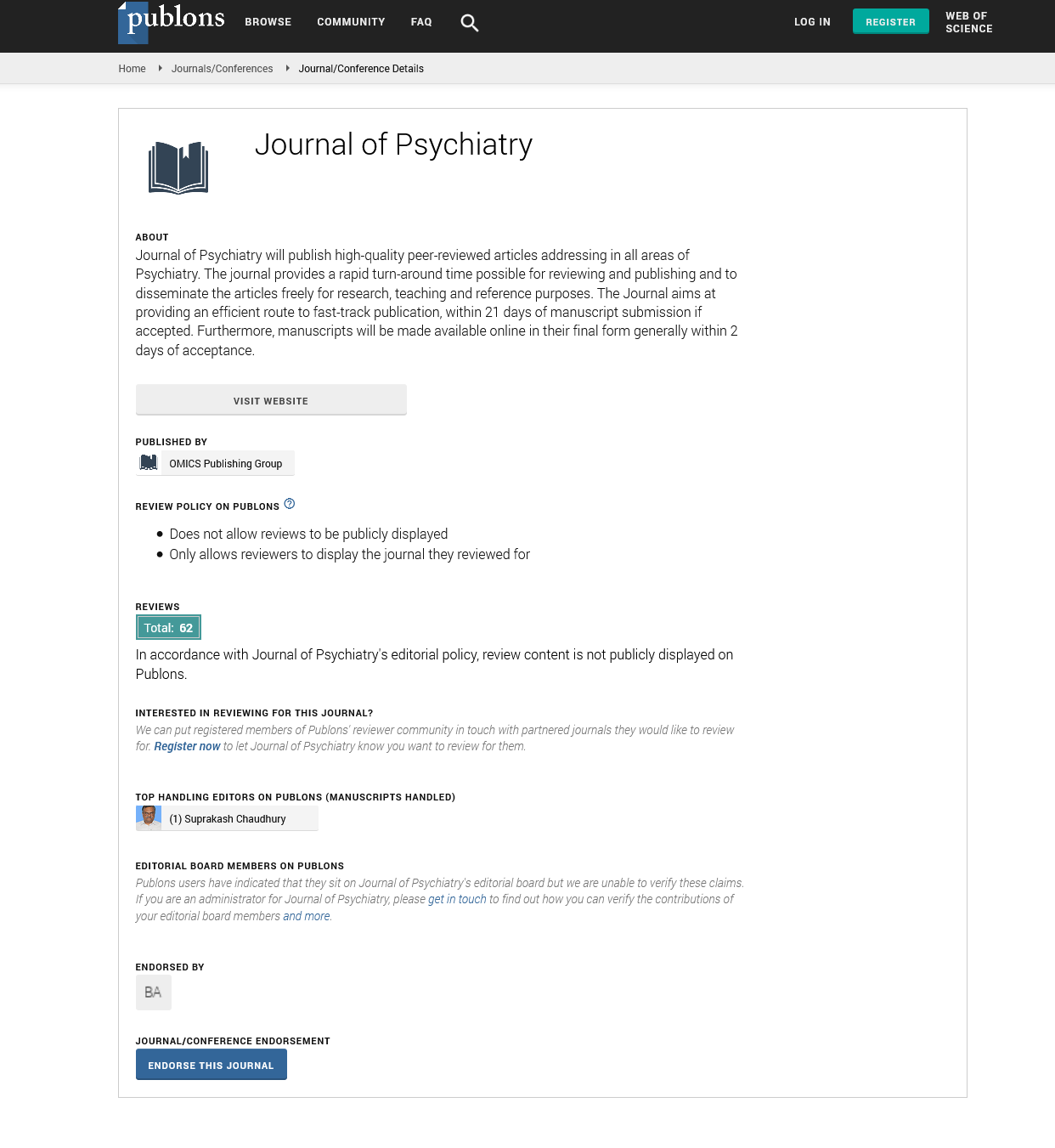Indexed In
- RefSeek
- Hamdard University
- EBSCO A-Z
- OCLC- WorldCat
- SWB online catalog
- Publons
- International committee of medical journals editors (ICMJE)
- Geneva Foundation for Medical Education and Research
Useful Links
Share This Page
Open Access Journals
- Agri and Aquaculture
- Biochemistry
- Bioinformatics & Systems Biology
- Business & Management
- Chemistry
- Clinical Sciences
- Engineering
- Food & Nutrition
- General Science
- Genetics & Molecular Biology
- Immunology & Microbiology
- Medical Sciences
- Neuroscience & Psychology
- Nursing & Health Care
- Pharmaceutical Sciences
Short Communication - (2020) Volume 23, Issue 1
Neurology Congress 2017: A rare case of recurrent PRES with rifampicin - Harsh Bhardwaj - Army Hospital
Harsh Bhardwaj*
Abstract
Posterior reversible encephalopathy syndrome is a disorder of reversible subcortical brain oedema involving the posterior parts of the brain which is seen in patients with acute neurological symptoms. There could be various manifestations syndrome which could present in combination or rarely in isolation. Most of the patients have encephalopathy at presentation followed by seizures, headache and disturbances in vision.
The most widely recognized causes incorporate renal disappointment, circulatory strain variances, cytotoxic medications, immune system issue, and pre-eclampsia or eclampsia. Mind imaging typically uncovers vasogenic oedema dominatingly including the reciprocal parieto-occipital areas.
Introduction
Posterior reversible encephalopathy condition (PRES) is a clinical disorder of cerebral pain, adjusted mental status, and seizures with reversible for the most part back leukoencephalopathy on neuroimaging Precipitating variables for PRES are multifactorial and incorporate auto administrative disappointment because of changes in circulatory strain, metabolic disturbances, and cytotoxic drugs. As the name infers, PRES is commonly reversible and resolves by rewarding the fundamental reason. The utilization of immunosuppressant is a realized hazard factor for the improvement of PRES. Among cytotoxic prescriptions, cyclosporine is the best answered to cause PRES, yet numerous different drugs have likewise been accounted for to have PRES as confusion. We report an uncommon instance of a patient who was given cyclophosphamide for the treatment of Anti-glomerular cellar layer (Anti-GBM) positive vasculitis, and created PRES.
Case Report
29-year-old African American lady introduced to the crisis division for three weeks of queasiness, regurgitating, and looseness of the bowels; and five days of anuria. She was seen as uremic with renal disappointment (Creatinine: 5.5 mg/dl, blood urea nitrogen: 34 mg/dl, Creatinine freedom: 6 ml/min). Renal biopsy indicated necrotizing glomerulonephritis (Immunoglobulin G, perinuclear against neutrophil cytoplasmic antibodies, hostile to glomerular storm cellar layer positive). She was treated with intravenous methylprednisolone began on day 5 of hospitalization (1 g intravenous day by day for three days followed by 24 mg two times per day), plasmapheresis on day 8 of hospitalization, and cyclophosphamide (incited at a portion of 510 mg in view of renal disappointment and plasmapheresis) on day 9 of hospitalization.
Our patient, an instance of atypical HUS on immunomodulation and on antihypertensive on treatment with ATT for PUO created repetitive PRES when rifampicin was acquainted with him. Rifampicin has not been referenced in the accessible writing to be reason for PRES. Be that as it may; our patient plainly built up the said disorder twice when the medication was given to him. He had enormous vacillations in the circulatory strain during the period when this medication was given.
It was then found by and large that rifampicin associates with hostile to hypertensive medications; amlodipin for this situation. Rifampicin incites the hepatic protein CYP3A4 which thusly prompts broad digestion of amlodipin in the liver hence radically decreasing its levels. In this manner prompting circulatory strain vacillations prompting PRES.
This work is partly presented at 15th European Neurology Congress August 29-31, 2017 held at London, UK

